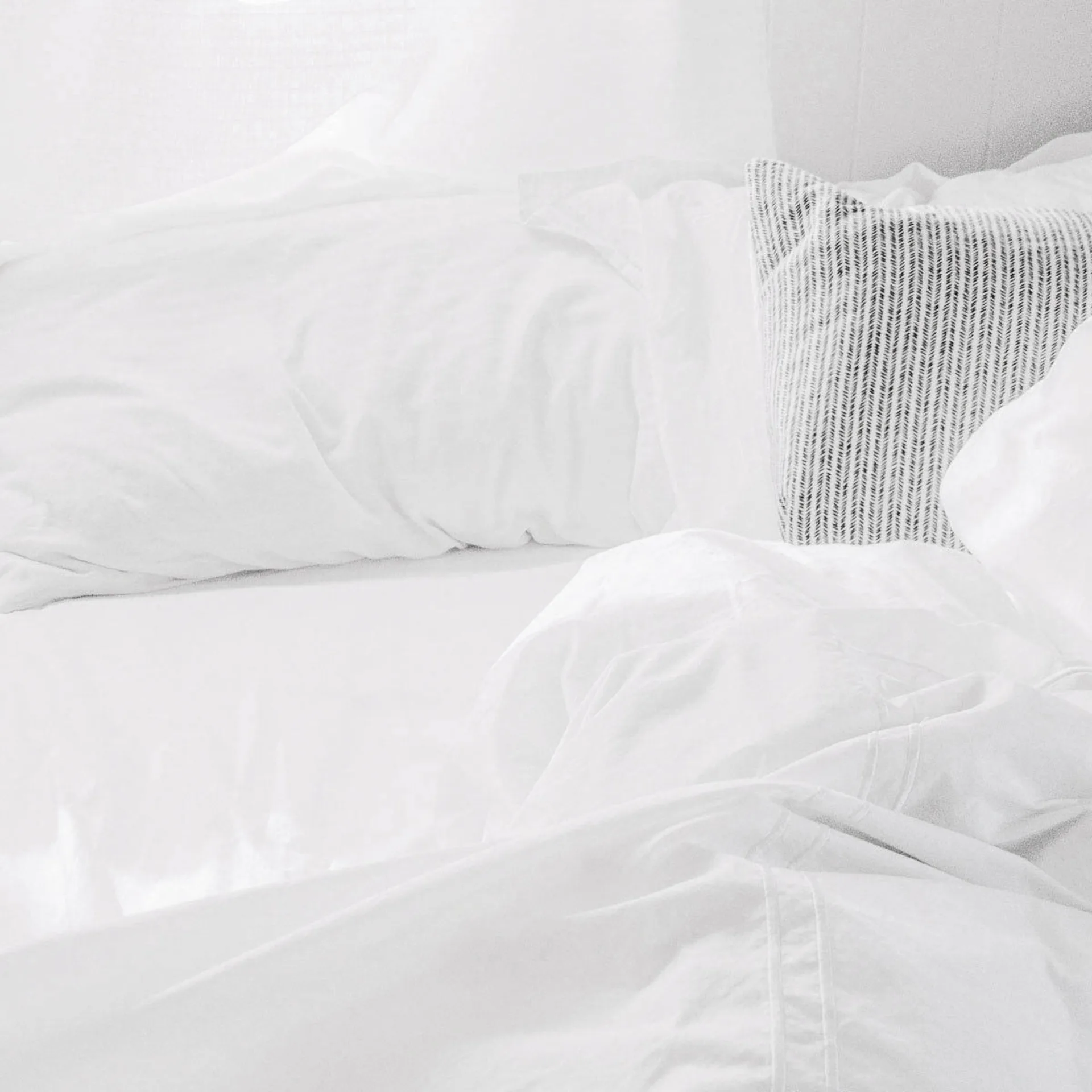5 Expert Tips for Decoding Your Clothing Label

When it comes to food labels, we spend hours researching facts and absorbing information about what we’re putting in our bodies everyday…but how much time and effort do we actually invest in what we’re putting on our bodies? Reading and understanding a clothing label should also be automatic in our day-to-day routines, and we’re here to show you how.
You may have heard this before, but it’s worth reiterating: the skin is our largest organ. It’s the barrier between the dangers–chemical, environmental, and otherwise–lurking right outside our bodies. Our skin protects us from the elements, regulates body temperature, and allows for the sensation of touch, heat, and cold. What we often forget, however, is how important it is to cover ourselves (and that rather large organ) in fibers that are conducive to good health.
While the fibers themselves may not trigger contact dermatitis or allergies, the chemicals used during processing certainly might. Some of the most common culprits include formaldehyde resins, para-phenylenediamine (PPD), anthraquinone-based dyes, and flame retardants, typically resulting in rashes, scaling, and itchiness in those who are allergic. And this doesn’t even begin to cover the absorption aspect of it all, which is a point worth noting, considering our fleshy exteriors are like big ol’ sponges.
With so many potential pitfalls woven into the clothing we wear on the daily, it begs the question: What can we do to improve the “health” of our wardrobes? It begins with proper care and knowledge, including how to read a clothing label and put those practices to good use. That’s where Yvonne Johnson, director of fabric development at Cotton Incorporated, comes in. An expert in all things fibers and fabrics, she’s here to share some of her most valuable tips on how to achieve a cleaner, greener closet.
1. Check Fibers First
Fabric is comprised of fibers, some singular, others blended, to create the piece of material used for our clothing, and every garment should have a label attached displaying this information. “The fiber ingredient list,” Johnson notes, “is the most important to consider when determining an item’s sustainability.” She recommends looking for cotton items, but not just because she’s partial.
“Cotton is a renewable, natural resource that generally washes cleaner and lasts longer than its synthetic counterparts,” says Johnson. “Consumers can also feel good about choosing natural fibers that biodegrade naturally or can be recycled,” like denim, corduroy, seersucker, and old blue jeans through Cotton Incorporated’s Blue Jeans Go Green program.
2. Avoid Dangerous Fibers
There are a host of fibers to avoid, not only because of the first-hand impact on our health, but also for the residual effects on the humans producing the materials and our environment. Johnson mentions microfibers, like polyester, in particular because they are made of plastic.
“When washed, microfibers shed and enter into rivers, lakes and oceans, contributing to plastic pollution in the earth’s waterways,” she cautions. Additional fibers to avoid include: acrylic, rayon, acetate and triacetate, nylon, and anything static resistant, stain resistant, permanent press, wrinkle-free, stain proof or moth-repelling.
3. Care Instructions Matter
In addition to fiber content, a clothing label also comes equipped with care and washing instructions. This tells you which methods to avoid–dry clean only, hand wash, delicate cycle–and is an indicator of how “high-maintenance” that article of clothing will be. Though Johnson says not to avoid dry cleaning if a label recommends it, noting that it may be possible to delicately hand wash the garment instead, it’s important to remember the negative ecological and physiological impact dry cleaning poses.
Plus, if you aren’t likely to wear something often because it requires dry cleaning, Johnson suggests opting for an article that will get much more use. “The smartest sustainability choice is for consumers to pick items that they’ll reach for and wear time and time again,” and this includes how well you tolerate specialty clothing care.
4. Organic Has Drawbacks
You may be thinking that organic clothing is the very best purchase you can make. However, Johnson explains why organic isn’t necessarily superior. “The best choice consumers can make is clothing made of natural fibers that were responsibly grown,” stresses Johnson. “[Organic] is not a catchall for ‘healthier’ or ‘better for the environment,’” she dispells, “it is in reference to a type of production system that is not inherently better on its own.”
“Organic cotton, for example, is more vulnerable to crop loss; as much as 45 percent more compared to conventional. So producing the same amount of organic cotton fiber can require more water, land and other inputs than cotton grown using more modern agricultural tools.”
5. Look Beyond Labels
Clothing labels are important, we totally get that, but in addition to the fiber content (both good and bad), care instructions, and all the other points we just learned, it’s also important to keep your wardrobe’s life-cycle in mind. Extending the life of your clothing and maximizing the cost-per-wear is almost as important as the fibers you’re investing in.
Fortunately, Johnson has what she calls “key-indicators of a high quality garment,” which are as follows: (1) Strong stitching – avoid any garments wherein the seams appear to be unraveling or loose. (2) Quality buttons and buttonholes and zippers – strong workmanship shows through in these details. Quality clothing will have secure buttons and well-made buttonholes. (3) Lastly, how does the item feel and look when you wear it? Your favorite items will probably feel soft against skin and not cause itching or irritation.
Related on Organic Authority
3 Tips to Remove Odors from Fabrics the DIY Way
The Organic DIY Nursery: 5 Kid-Friendly Organic Fabrics
DIY Powder or Liquid Laundry Detergent For Naturally Clean Clothes

